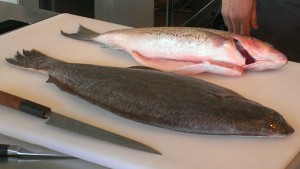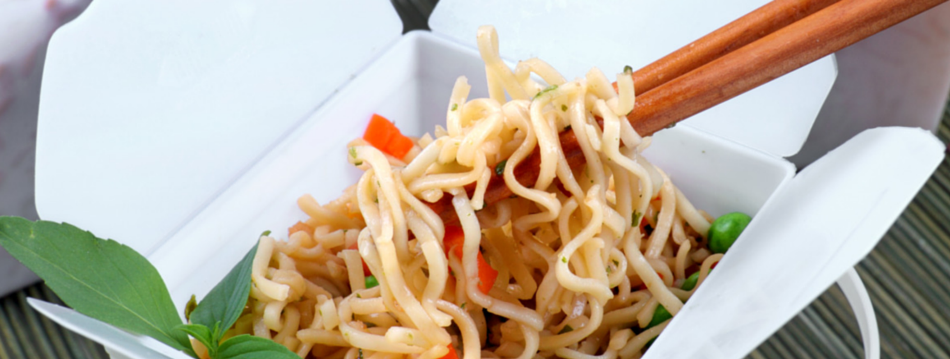
Butchery is something most of us don’t really think about. Many of my friends say they don’t enjoy any meat with bones, and I generally attribute this to some degree of squeamishness, and a preference to not think about the animal that is the source of their dinner. I may be wrong about this, perhaps it is laziness about having to do that’extra’ work… Though it’s quite easy to come by boneless almost anything—even chicken wings, the ability to remove the bones is not only handy, but the most economical way to buy your meat, and leaves you with bones which you can use for stocks and sauces.
This week at COOK masters program we dipped out toes into the sea of butchery. Jon Cichon of Lacroix started with a demonstration in cutting two fish, a fluke and a bass. All fish fall into two categories; flat and round, and all flat fish regardless of the size are cut exactly the same way, as are all round fish. Once you understand the structure and the anatomy (and for fish that’s pretty simple) your knife is good and sharp, and you practice a little, cutting fish is not too difficult. We didn’t get to cut the fish, but Jon talked as he worked, and we could see each step he took, and why.


Next we were on to the chicken butchering part of the day’s festivities! And of course we started with a whole chicken, by which I mean feet and head attached. There was just one of these though, and the chickens each of us got to cut were more like the chickens you find in the store.

I was feeling pretty confident about cutting my chicken—I had sharpened my knives, and I’ve cut more chickens than I can count, and yet, as we each cut our chickens at out stations I found my confidence flagging, and I wasn’t very proud of my final quartered bird. Though I guess I did a fairly respectable job, it wasn’t the elegant, and neatly dispatched chicken Jon had cut so easily. The whole experience was a bit humbling, but I learned some good techniques:
- When separating the leg and thigh there is a line of fat, and if you cut along that line you will be able to cut straight through
- When quartering a chicken cut the leg quarter first (I had always started with the breast quarter)
- When filleting fish use the bones to guide you
- Don’t be afraid to pop the bones out of the socket
- And if you guide the tip of your knife along the back of the chicken when you remove the leg quarter you can keep the oyster with it
This was our second class—we, like almost everyone have been beset with weather. Cook is a great experience and my fears that the class would be entirely twenty something male chefs proved unfounded. The class is a great mix of people with a range of experience and age, and something different to bring to the ‘table’. Keep reading as we have six more classes to go!





.jpg)





Adrian Seltzer - Are you ready to do a Turducken yet?
nrlowell@comcast.net - I am still working on cassoulet!
Michelle Matthews-DeLorge - I’m not saying this to be facetious at all but information like this would really come in handy during the zombie Apocalypse. I’m always thinking about end of the world stuff but seriously, this was very informative and I want to start to try doing this on my own because it’s a really good skill to have.
nrlowell@comcast.net - Thanks, I have been thinking of doing a video of some instructional techniques, but am a bit tech challenged…